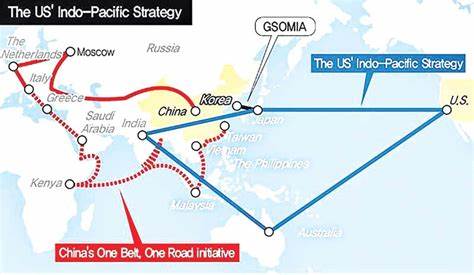
Abstract
As soon as the Biden administration came to power, it claimed that the original U.S. intention to change China's internal political and economic structure had failed and that it now needed to construct an external environment to constrain and regulate China's behavior. The Biden administration proposed the Indo-Pacific Economic Framework (IPEF) in large part to divide ASEAN and weaken China's economic influence in Southeast Asia, while the move could also alleviate some ASEAN countries' concerns about the U.S. overemphasis on military and security. As countermeasures, on the Taiwan issue, China must further increase its reform and openness, strengthen its economic interdependence with ASEAN, and dilute the U.S. military power to promote the "securitization" of regional affairs with economic power.
Research Questions
-
The Biden Administration's "Indo-Pacific Strategy 2.0"
-
The two major grips of the "Indo-Pacific Strategy 2.0"
-
The measures China should take on Taiwan and South China Sea issues